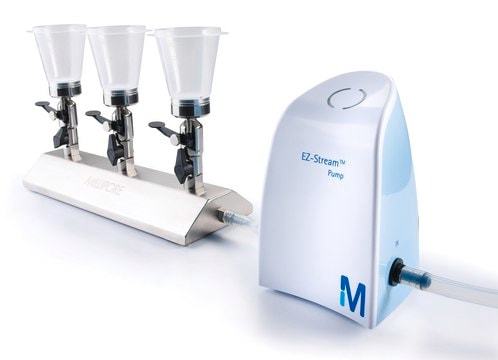W331201
3-(Methylthio)propyl isothiocyanate
≥98%, FG
Sinónimos:
radish isothiocyanate
About This Item
Productos recomendados
origen biológico
synthetic
Nivel de calidad
grado
FG
Halal
Kosher
Agency
meets purity specifications of JECFA
cumplimiento norm.
EU Regulation 1334/2008 & 178/2002
Análisis
≥98%
índice de refracción
n20/D 1.564 (lit.)
bp
254 °C (lit.)
densidad
1.102 g/mL at 25 °C (lit.)
aplicaciones
flavors and fragrances
Documentación
see Safety & Documentation for available documents
alérgeno alimentario
no known allergens
Organoléptico
pungent; vegetable; sulfurous
cadena SMILES
CSCCCN=C=S
InChI
1S/C5H9NS2/c1-8-4-2-3-6-5-7/h2-4H2,1H3
Clave InChI
LDKSCZJUIURGMW-UHFFFAOYSA-N
¿Está buscando productos similares? Visita Guía de comparación de productos
Aplicación
- Functional Chitosan-Based Composite Film Incorporated with 3-(Methylthio) Propyl Isothiocyanate/α-Cyclodextrin Inclusion Complex for Chicken Meat Preservation.: This study explores the development of a functional composite film based on chitosan and incorporating 3-(methylthio) propyl isothiocyanate within an α-cyclodextrin inclusion complex. The composite film demonstrates significant antimicrobial properties, making it highly effective for chicken meat preservation, thereby extending the shelf life and maintaining the quality of meat products (Wu et al., 2022).
Palabra de señalización
Danger
Frases de peligro
Clasificaciones de peligro
Acute Tox. 3 Dermal - Acute Tox. 3 Inhalation - Acute Tox. 3 Oral - Aquatic Acute 1 - Aquatic Chronic 1 - Eye Irrit. 2 - Skin Irrit. 2 - STOT SE 3
Órganos de actuación
Respiratory system
Código de clase de almacenamiento
6.1C - Combustible acute toxic Cat.3 / toxic compounds or compounds which causing chronic effects
Clase de riesgo para el agua (WGK)
WGK 3
Punto de inflamabilidad (°F)
187.9 °F
Punto de inflamabilidad (°C)
86.6 °C
Elija entre una de las versiones más recientes:
¿Ya tiene este producto?
Encuentre la documentación para los productos que ha comprado recientemente en la Biblioteca de documentos.
Nuestro equipo de científicos tiene experiencia en todas las áreas de investigación: Ciencias de la vida, Ciencia de los materiales, Síntesis química, Cromatografía, Analítica y muchas otras.
Póngase en contacto con el Servicio técnico







